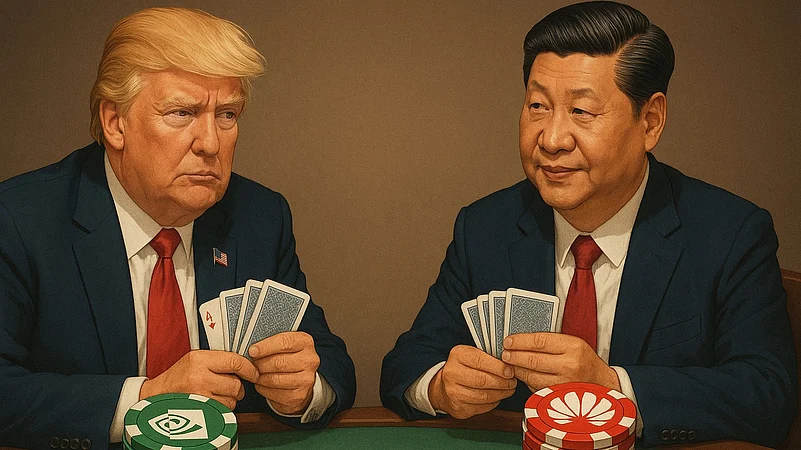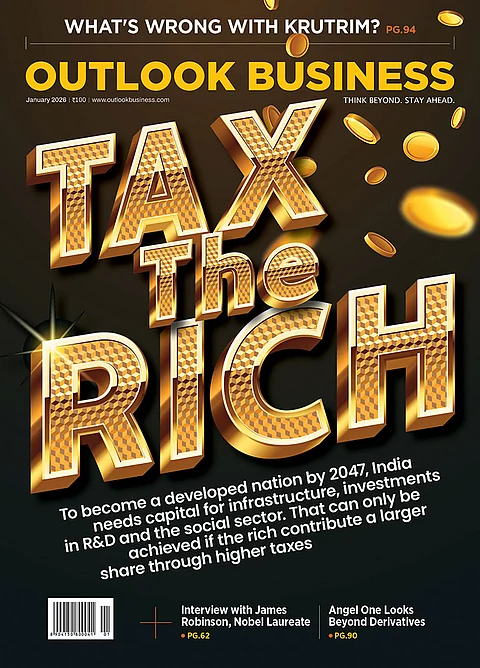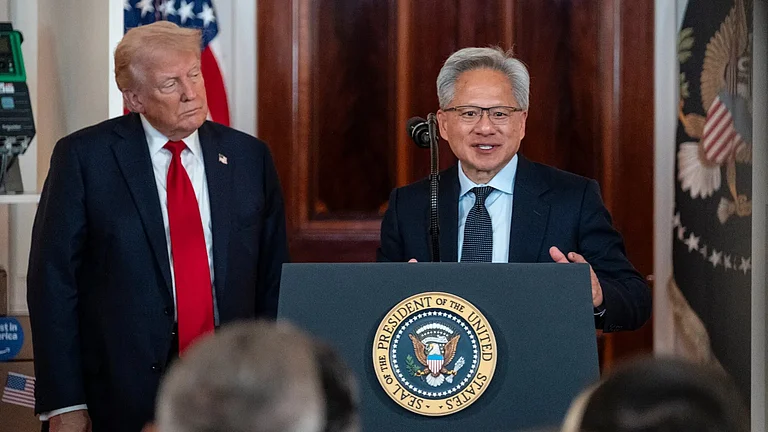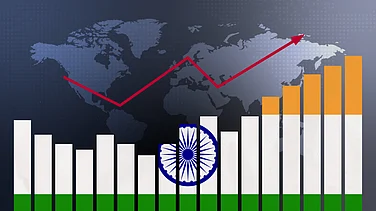The Trump administration's recent decision to rescind the Biden-era Artificial Intelligence (AI) Diffusion Rules, blending geopolitical strategy with economic pragmatism, could lead to interesting results. The initial aim was maintaining American technological supremacy in a very myopic, zero-sum view of the world. Thankfully, with feedback loops kicking in and economics working its way in, the dismantling of these restrictions with respect to non-adversarial nations alters the strategic landscape of global AI competition, which would be an interesting study in game theory and international relations. This move by the US is trying to balance innovation and business, and security. For India, this could be good as it provides access to critical semiconductors like Nvidia’s GPUs, which will help its ambitious National AI Mission as well as other private entities. But what’s more interesting is the complex game of strategic alliances, calculated risks, and unintended consequences that will follow.
Zero-Sum View
The original AI Diffusion Rules functioned as a technological chokepoint, similar to semiconductor export controls but focused on algorithmic innovations and AI model architectures. They restricted American companies from sharing advanced AI training methodologies, model weights, and certain research findings with entities in designated countries, while also limiting the computational resources that could be exported for AI development. The rules were premised on a zero-sum view of AI advancement, where American technological leadership required actively constraining competitors' access to breakthrough capabilities.
Game Theory - from Defection to Chicken Game
From a game theory perspective, this rescission transforms what was previously a coordination game with clear rules into a more complex multiplayer scenario with uncertain payoffs. Under the previous regulatory framework, the United States was essentially playing a strategy of "defection" in the classic prisoner's dilemma of international technology sharing, hoarding its AI advantages while other nations were forced to develop capabilities independently or seek alternative partnerships. The removal of these constraints now creates what economists call a "chicken game," where multiple players must decide whether to cooperate or compete aggressively, with the risk that mutual competition could lead to suboptimal outcomes for all parties.
The Trump administration’s reversal - a cooperative signal to allies while maintaining China-specific barriers - reflects a tit-for-tat adjustment. This delicate balance will depend on whether allies reciprocate by aligning with US interests, which can create a Nash equilibrium where mutual cooperation maximises collective payoff.
Consider how the major AI players must be thinking today. American companies like OpenAI, Google, and Anthropic can now freely collaborate with international partners. This will help AI development globally. But this also means that their monopolistic advantages are reduced. Meanwhile, countries like China, which had been developing parallel AI ecosystems partly in response to American restrictions due to “creative insecurity”, must now decide whether to continue down their independent path or engage more openly with America.
For India, its large pool of AI talent and growing technology sector had been somewhat constrained by the diffusion rules, which limited access to cutting-edge American AI research and partnerships. Indian companies can now access advanced AI technologies more easily, collaborate more freely with Silicon Valley giants, and accelerate their own AI development programs, potentially not needing to invest in years of independent research and development to catch up.
Previously categorised under restrictive export tiers, India’s AI ambitions - including its plan to deploy 10,000 GPUs via public-private partnerships - were at odds with Biden-era limits. Now, with fewer barriers, India can accelerate its AI infrastructure push while positioning itself as a neutral hub in the US-China rivalry. Game theory suggests India faces a stag hunt: collaborate with the US for high-value gains (advanced AI ecosystems) or pursue risk-averse self-reliance with potentially lower gains. Early signs point to collaboration - Microsoft and Oracle’s expanded Indian data centre investments signal confidence in this detente. Yet, India must hedge against future US policy shifts by diversifying partnerships, a classic mixed-strategy approach to minimise vulnerability.
However, this opportunity comes with strategic risks that game theory helps illuminate. India now faces what strategists call a "commitment problem" - the difficulty of credibly signaling long-term intentions in a rapidly changing environment. If India becomes too dependent on American AI technologies, it could become strategically vulnerable in the future if political relationships shift or future administrations reimpose restrictions. These future happenings can never be guessed correctly. On the other hand, if India does not embrace these new opportunities, it may fall behind competitors who more aggressively integrate American AI advances into their national strategies.
The scenarios going ahead will become even more intriguing when one considers the multipolar nature of global AI competition. China's response to American deregulation will likely influence India's optimal strategy, and so on.
Huawei still Ascends
While the US lifts restrictions for allies, Huawei’s Ascend chips still firmly hold Washington’s attention. The new guidance explicitly flags Huawei-developed semiconductors as “subject to US jurisdiction” regardless of their global origin. Isn’t this creating a paradoxical situation? China, now further isolated, faces intensified pressure to achieve self-sufficiency. In game-theoretic terms, China’s dominant strategy is to defect - doubling down on indigenous innovation through firms like Huawei and SMIC. If successful, this could bifurcate the global tech ecosystem into competing US- and China-aligned blocs, a suboptimal outcome for all players but increasingly likely as trust erodes.
Scenarios Ahead: Cooperation, Conflict, or Chaos
Three plausible scenarios emerge from this reshuffled board. First, the Alliance Multiplier, which sees the US and India deepen AI collaboration, creating interoperable standards that attract southeast asian and middle eastern nations. This “expanding pie” scenario leverages open innovation to counter China’s closed-system approach, but risks intellectual property (IP) leakage and diluted competitive edges.
The second scenario is the AI Cold War. China responds to US restrictions by accelerating its chip ecosystem, leveraging partnerships with other countries like, say, Russia. This could see the beginning of a zero-sum arms race that can disintegrate global supply chains and choke cross-border R&D. India, caught in the middle, faces tough choices between access and autonomy.
Third, the Unintended Consequence. Relaxed export rules inadvertently enable third-party intermediaries to reroute US chips to China via neutral nations. This “diversion dilemma” could force the US to reimpose broader controls, undermining the very alliances it sought to strengthen - a classic tragedy of the commons.
From a broader global perspective, the rescission of AI diffusion rules represents a fascinating test of different theories about technological development and international competition. The neo-realist school of international relations would predict that this move will ultimately strengthen competitors at America's expense, as technological advantages diffuse more rapidly and other nations use American innovations to challenge American dominance. Liberal institutionalists, however, might argue that increased cooperation and knowledge sharing will create positive-sum outcomes that benefit all participants while maintaining American leadership through continued innovation advantages.
The Meta-Game of Trust
Ultimately, the AI Diffusion Rule’s rescission is less about chips than about trust-building. The ever-so-paranoid Trump administration, by now easing restrictions, has signaled confidence in its allies’ ability to self-regulate against Chinese engagement, without needing external coercion. This is, in effect, a Bayesian game where beliefs about partners’ reliability shape strategy. For India, the test lies in leveraging this trust to build domestic capacity without crossing the threshold that can trigger US suspicion, all the while keeping in mind that this is a very explosive environment. For the global order, it’s a high-stakes experiment in whether cooperative frameworks can outpace authoritarian tech ascendancy. As game theory reminds us: in iterative games, long-term cooperation thrives when players balance immediate gains with long term gains.
The timing of this decision adds another layer of strategic complexity. As artificial intelligence increasingly determines national competitiveness across multiple domains - from military capabilities to economic productivity to social governance - the stakes of these policy choices have never been higher. The administration appears to be betting that American AI leadership is sufficiently robust that it can maintain advantages even while sharing more freely, and that the economic benefits of global AI proliferation will ultimately strengthen American interests. There have to be some overtures from the Chinese side to sustain this belief and create a more cooperative atmosphere instead of one filled with suspicion.
Perhaps most intriguingly, this policy shift may force a fundamental reconsideration of how we think about technological sovereignty in an interconnected world. The previous model of technology export controls assumed that innovation could be effectively contained within national boundaries, but the rescission of AI diffusion rules acknowledges the reality that information-based technologies may be inherently more difficult to constrain than physical goods or even traditional software.
Arindam Goswami is a Research Analyst at The Takshashila Institution. (Views expressed are personal)


























